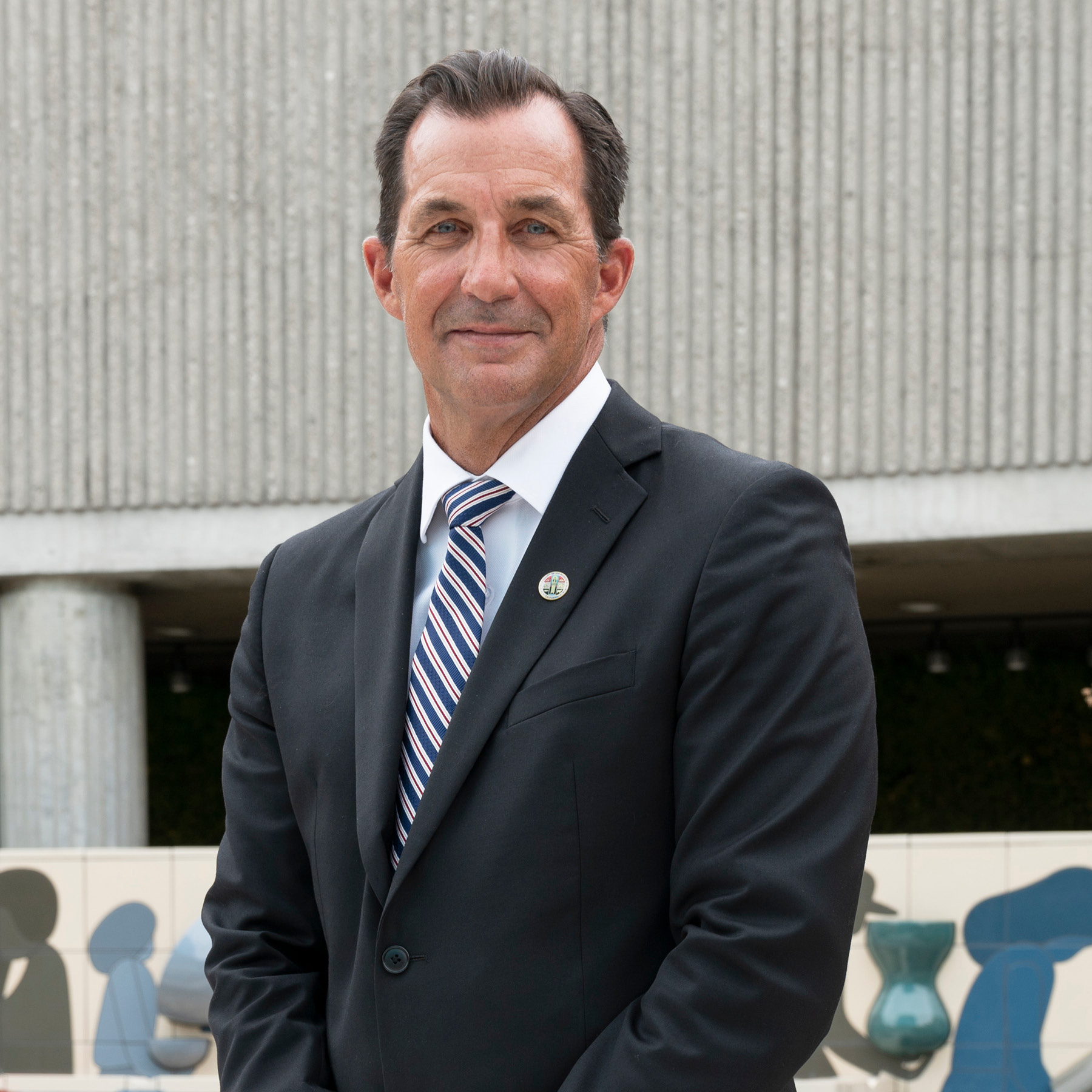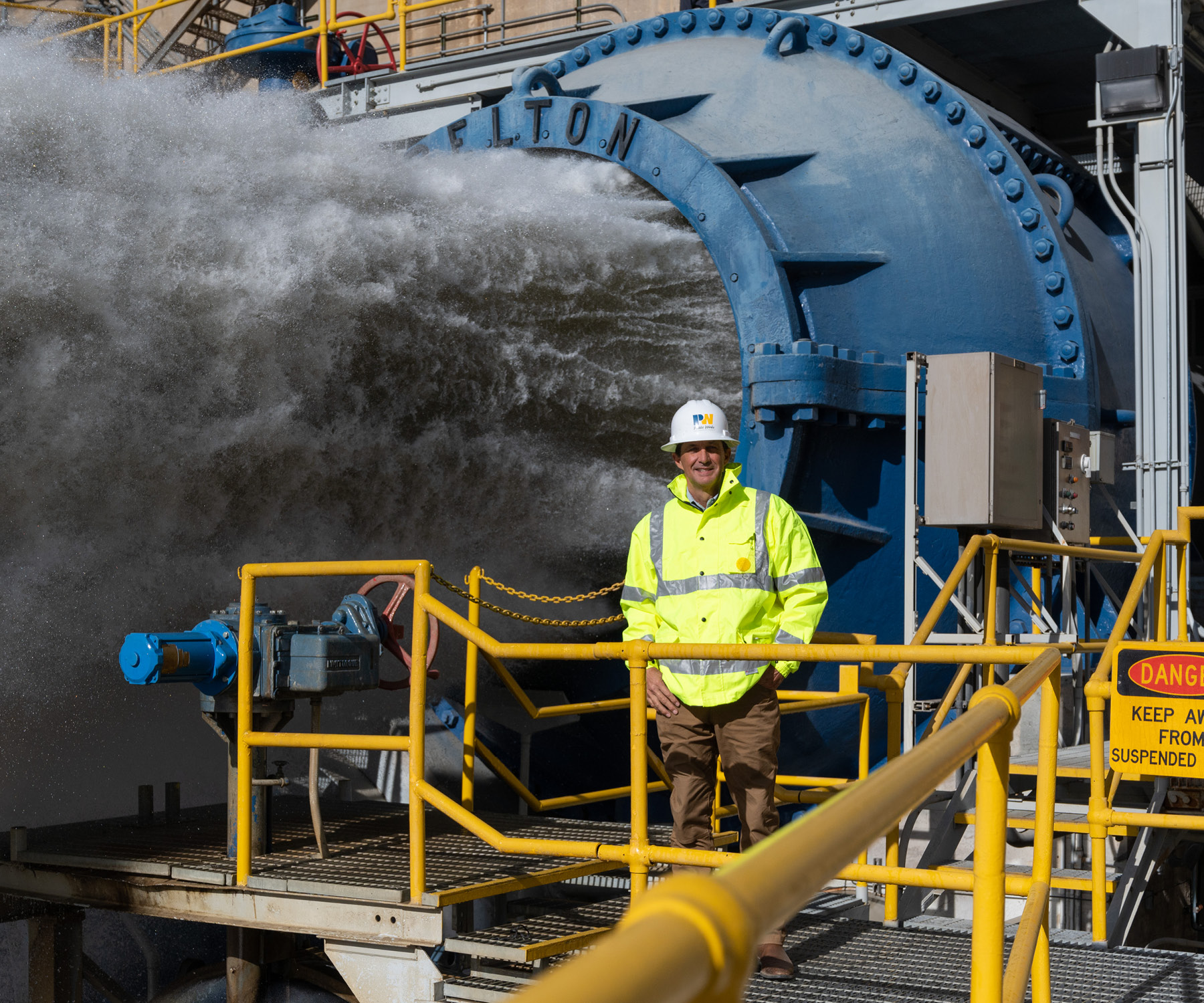Language
You can read the magazine in one of the following languages
As a historic series of rain events pounded the length of Los Angeles County in February 2024, Los Angeles County Public Works (LACPW) was on high alert. Reports of landslides and potholes flooded in, but the department didn’t buckle under the pressure.
“It’s quite a testament to the system that we maintain,” Director Mark Pestrella tells The CEO Magazine.
“We had no loss of life and no major flood event in LA County and this is due to the department’s operations and the maintenance of our systems.”
He likes to describe it as the “emergency room of civil engineering”.
“We handle anything and everything you can imagine when it comes to infrastructure, both horizontal and vertical. This is because, unlike many municipalities, in the county of Los Angeles we combine these business lines together into one agency,” he says.

This approach helps it to tackle the manifold challenges posed by the Californian county’s vastness combined with its intense diversity. With the county the largest in the United States, spanning around 10,600 square kilometers, the LACPW serves more than 10 million people.
“Not only is the demographic the most diverse in the United States, but it’s also the geology, the topography, the physical nature of LA County,” Pestrella explains. “Its natural resources and biodiversity are so complex and diverse, and it’s really what makes my job very interesting and challenging.”
The breadth of its offering makes LACPW the largest public works agency in the United States, both in terms of its portfolio and the number of people it serves. It incorporates six business lines, which work across waste management, transportation, water resources and building construction.
“We are the county’s builder with a capital improvement budget of over US$5 billion a year building both horizontal and vertical assets,” Pestrella says.
These include well known landmarks like the Disney Concert Hall as well as lesser known but crucial buildings like the county’s fire stations.
On top of all this, it is also a full service emergency management agency fielding around 72,000 calls each year.
“We deal with everything from cockroaches coming out of the manholes to major incidents,” he explains.

“LA County is the 21st-largest economy in the world, worth nearly US$712 billion. So to say that we’re large and complex is an understatement.”
“When you hear the term ‘public works’ or ‘department of public works’, typically people in the United States will think about roads and rural road systems, especially when you’re talking about counties.
“The breadth of our department is most definitely inaccurately described by calling it a department of public works. It’s better described as a public works agency and that’s why we actually dropped the term department.”
The meaningful nature of the work undertaken by LACPW on a daily basis is a major motivator for Pestrella, while the immense scale of the task at hand keeps it challenging.
“It’s a significant service area with tremendous impact on people’s quality of life and particularly on the economy,” he expands. “LA County is the 21st-largest economy in the world, worth nearly US$712 billion. So to say that we’re large and complex is an understatement.”
“One in 35 of the people living in the United States lives here – which just gives you some context about the complexity of it.”
Now, he is determined to deliver the maximum impact possible in the area of public service.
“I often quite wake up and say, ‘Have I done the most that I can do? Have I helped everyone I could?’” he says.
“When I look at the total number of people in disadvantaged communities in Los Angeles County, the vulnerability of the communities that we serve, it drives me every day to think what more we can do to improve the quality of life for the citizens of Los Angeles County.”
Many of the major strides made by LACPW in recent years have been on the housing front, but driving business opportunities has also been high on the agenda, with Pestrella successfully introducing many private sector concepts to public sector business.
“Many people throughout my career have told me that government operating like a private business can’t work,” he says. “When someone tells me something can’t be done, I get driven by that.
“It’s the best way for us to deliver on our promise to the public and it’s the wisest way to use their money. The best bang for their buck is if we organize ourselves and not only mimic, but partner with private sector to bring about a better customer experience for the community that we serve.”

“When someone tells me something can’t be done, I get driven by that.”
Pestrella explains that his experience out in the field as a civil engineer has also proved invaluable during his tenure, giving him an inbuilt awareness of the infrastructure required to make the world tick and maintain high quality of life.
“I spent many years as a practicing civil engineer in-house as well as in the field, and realized what an impact the work civil engineers have on human health and wellbeing,” he reflects. “It’s sometimes overwhelming for civil engineers to accept our responsibility and our role in society. Everything we build is for humans to function and absolutely impacts the quality of their life.”
As the world evolves, the nature of LACPW’s work must react to this changing environment as demand for its services inevitably increases, working closely with valued partners such as the City of Los Angeles Department of Water and Power.
Climate change is a particular concern as the agency strives to maintain and ideally improve the quality of life in LA County in the face of rising sea levels, coastal erosion, depleted drinking water supplies and heat waves.
“When we see the degradation of the quality of life due to things like climate change, it’s a huge issue,” Pestrella reflects. “And that expectation that somehow we’re going to be able to engineer our way around it, that’s a big challenge.”
Addressing the equity of its infrastructure investments is another key concern for Pestrella and his team, who are working hard to deliver a new creative framework for future decision-making around investments that address any inequities.
“What’s been frightening is the rude awakening of how much impact we’ve had, how much burden we placed on specific communities for the lack of investments we’ve made,” he acknowledges, referring to communities forced to live around freeways or rail systems for economic reasons, suffering health impacts as a result.
“In fact, one-in-four Black children suffers from asthma here in LA County, it’s three times higher than for white children,” Pestrella says. “We’ve also learned that Black people constitute 16 percent of people killed by cars in traffic collisions, but they comprise only 9 percent of the overall population.
“And then of course, Latinos experience the highest prevalence of food insecurity in LA County. Access was identified as one of the highest contributing factors, meaning some people in LA County have to take two-to-three bus rides before they can get to fresh food.”

“What’s been frightening is the rude awakening of how much impact we’ve had, how much burden we placed on specific communities for the lack of investments we’ve made.”
Indeed, with 47 percent of the population of LA County living in disadvantaged communities as per federal, state and local definitions as well as 75,000 homeless people, LACPW has an important part to play in redressing the balance.
“I’m so thankful that in my time, I’m going to have the discretion and the framework to present to our board as we make investment decisions to make a difference, to make change and to invest appropriately,” Pestrella says.
